Yoga Vs Chiropractor/chiropractic care- choosing between the two can be tricky. Both have a variety of advantages and disadvantages, so it takes work to make a decision. Making the right choice is essential for those dealing with chronic pain or just wanting to boost their overall health. So, what sets Yoga and chiropractic care apart, and which is the best choice? Continue reading to discover which option is the best fit for you.
What is Yoga?
Yoga is an age-old discipline from India. It combines physical postures, breathing exercises, and meditation to create a holistic welfare approach. Through the practice of Yoga, practitioners seek to improve physical health, mental clarity, and spiritual connection. The origin of the word Yoga is the Sanskrit word “yuj”, which signifies the union or unification of one’s individual consciousness with the universal consciousness.
Benefits of Yoga
Here are 10 excellent benefits that Yoga can bring to your life:
Increased Flexibility
One of the most obvious benefits of Yoga is increased flexibility. By regularly practising the poses, your body becomes more supple and flexible. It involves both stretching and strengthening exercises which further improve flexibility in the hips, back, and shoulders. In this study, experts could determine that Yoga can help improve flexibility in a group of healthy women practising Hatha Yoga regularly.
Improved Strength
Yoga is a great way to build strength, as it works out all the muscles in your body. Yoga increases strength through the practice of various postures, called asanas, that require the engagement of different muscle groups. The asanas also help to improve your balance, which benefits overall strength.
Improved Cardiovascular Health
Yoga can help to improve your cardiovascular health by getting your heart rate up and increasing your lung capacity. It also helps in lowering blood pressure, reducing heart rate, and enhancing the overall functioning of the cardiovascular system.
Improved Concentration
Yoga helps to sharpen your focus and concentration skills by calming your mind and improving your ability to concentrate on the present moment. Through various poses, deep breathing techniques, and meditation, Yoga fosters mindfulness and focus, allowing individuals to better connect with their inner selves and achieve a more balanced state of mind.
Improved Posture
Practising Yoga postures helps you improve your posture by making your core stronger and enhancing your alignment. Yoga also enhances balance and stability, which further contributes to improved posture in daily life.
Stress Relief
Practising Yoga can help to reduce stress by calming your mind and body. It does so by combining physical postures, breath control, and meditation techniques. This harmonious blend of practices in turn helps to release muscular tension, and balance the nervous system.
Improved Balance
Yoga improves balance by incorporating various poses and exercises that engage the core muscles, increase body awareness, and develop coordination. This practice enhances stability and postural control, reduces the risk of falls, and promotes overall well-being. Through focused breathing and mindfulness, Yoga can also help improve mental balance and emotional resilience.
Improved Breathing
The breathing exercises in Yoga can help to improve your breathing, which is beneficial for overall health. It encourages slow and deep breathing, allowing for better oxygenation of the body and promoting relaxation. Additionally, many Yoga postures focus on opening the chest, shoulders, and back, which supports proper posture and alignment of the respiratory system, further enhancing breathing efficiency.
Improved Sleep Quality
Practising Yoga can help to improve your sleep quality by calming your mind and body. Through a combination of physical postures, controlled breathing, and meditation techniques, Yoga helps to calm the mind and release tension from the body, making it easier for individuals to fall asleep faster, experience deeper sleep, and wake up feeling more rested and refreshed.
Improved Self-Confidence
Yoga can help to boost your self-confidence by helping you to feel more comfortable in your own body. It does so by enhancing physical strength, increasing self-awareness, reducing stress and anxiety, promoting mindfulness, fostering a positive mindset, improving posture, and encouraging self-acceptance.
Who is a chiropractor? And, What is chiropractic care?

A chiropractor is a healthcare professional who specialises in the diagnosis, treatment, and prevention of neuromuscular and musculoskeletal disorders, particularly focusing on the spine. They perform manual adjustments or manipulations to the spine and other parts of the body to improve alignment, alleviate pain, and promote the body’s natural ability to heal itself. Chiropractors aim to help patients achieve overall wellness and improved quality of life, avoiding the need for medications or surgery whenever possible.
Chiropractic care is an alternative treatment to traditional medicine and primarily focuses on the diagnosis and treatment of mechanical disorders of the musculoskeletal system, particularly the spine. Chiropractic care is a holistic, non-invasive approach to healthcare that emphasises the body’s inherent recuperative power. It focuses on maintaining optimal health and function through methods such as spinal manipulation, therapeutic exercises, lifestyle advice, and nutritional counselling.
Benefits of chiropractic care
Here are 10 benefits of seeing a chiropractor:
Pain relief
A study published by Harvard Medical School states that chiropractors can help to relieve pain caused by musculoskeletal issues, including back pain, neck pain, and headaches.
Improved mobility
Chiropractic adjustments can help improve your range of motion and mobility.
Improved posture
Chiropractors can help improve your posture and help correct any imbalances in your body.
Increased circulation
Chiropractic adjustments can help increase circulation in the body, which can help reduce swelling and improve healing.
Improved flexibility
Chiropractors can help improve your flexibility and reduce stiffness.
Strengthened immune system
Chiropractic adjustments can help strengthen the immune system and help the body better fight off infection and disease.
Improved digestion
Chiropractic adjustments can help improve digestion by stimulating the digestive system and improving gut health.
Reduced stress
Chiropractic care can help reduce stress levels, which can help improve overall health and well-being.
Improved overall health
Chiropractic care can help improve overall health by helping to keep the body in balance.
How are chiropractic care and Yoga related?
The relation between chiropractors and Yoga is that both focus on the body’s well-being. The former focuses on the spine, and the latter on the muscles and joints. Combining chiropractic care with Yoga is a great way to help improve your overall health and wellness. Yoga helps to increase flexibility, improve posture, and reduce stress. Chiropractic treatment assists in straightening the spinal column, thus relieving pain. When combined, these two treatments can work together to help improve your overall health. Yoga can help increase the range of motion and reduce muscle tension, while chiropractic care can help realign the spine and reduce pain. Together, these treatments can help to improve overall health, reduce stress, and improve physical well-being.
What happens when you combine chiropractic care with Yoga?

Combining chiropractic care with Yoga is becoming increasingly popular to treat various back and neck ailments. This type of holistic approach to healthcare seeks to treat the underlying cause of the problem rather than just addressing the symptoms. Patients can experience long-lasting relief from their pain and discomfort by doing so. Chiropractic care focuses on identifying and correcting misalignments in the spine and other joints that can lead to pain and dysfunction. Through manual spinal manipulation, chiropractors can restore proper alignment and reduce pressure on the nerves. This can reduce pain and improve mobility. Yoga involves stretching and strengthening the body’s muscles through exercise. It also promotes mindfulness and awareness of the body. Chiropractic care and Yoga can be a powerful holistic approach to healthcare. Chiropractic care can address the underlying cause of the pain, and Yoga can help to strengthen and stretch the muscles to promote better alignment and reduce the strain on the joints and nerves. Together, they can help reduce pain and improve overall health.
Combined benefits of chiropractor and Yoga
Yoga and chiropractic care can be a powerful combination. Here are some benefits of combining these two treatments:
Improved Mobility
Yoga helps to open up tight joints and muscles, making it easier for a chiropractor to adjust them. This can result in increased flexibility and range of motion.
Improved Flexibility
Combining chiropractic care and Yoga helps improve flexibility and range of motion. This helps reduce stiffness, tension, and pain in the body.
Increased Strength
Yoga and chiropractic care can help improve muscle strength, which can help improve posture and stability.
Improved Functionality
Yoga and chiropractic care can help improve the body’s functionality by improving joint mobility, muscle strength, and overall balance.
Reduced Pain
By combining chiropractic adjustments with Yoga, you can reduce the amount of pain in your body. The two treatments work together to reduce tension and stiffness and to improve posture.
Improved Recovery
Chiropractic care can help speed up healing after an injury or surgery. Yoga can help further reduce pain and improve recovery.
Improved Posture
Poor posture can cause pain, fatigue, and stiffness. Combining Yoga with chiropractic care can help improve posture and reduce the discomfort associated with poor posture.
Improved Balance
Yoga helps improve balance, which can also benefit chiropractic treatments. Improved balance can help make sure the body is adequately aligned during adjustments.
Improved Mental Health
Yoga and chiropractic care can help reduce stress and improve mental health. This can provide a sense of well-being and improve overall health.
Improved Joint Health
Yoga can help open up tight joints, while chiropractic adjustments can help improve alignment and reduce joint pain.
Improved Performance
Both Yoga and chiropractic care can help improve performance. Improved mobility, balance, posture, and joint health can help improve athletic performance.
Improved Sleep
Yoga can help reduce stress and improve mental health, which can help improve sleep. Chiropractic care can also help improve sleep by reducing pain and tension.
Improved Overall Health
Combining chiropractic care and Yoga can help improve overall health and well-being.
Enhanced Quality of Life
Combining chiropractic care and Yoga can help improve overall health, which can lead to an enhanced quality of life.
Does practising Yoga eliminate the need for a chiropractor?
While Yoga and chiropractic care offer health benefits, they are not interchangeable. Yoga is a form of physical exercise focusing on stretching and breathing techniques. At the same time, chiropractic care is a form of alternative medicine that focuses on manipulating the spine and joints. Practising Yoga can benefit many aspects of overall health and wellness, including helping reduce the need for chiropractic care. Yoga helps to improve posture, increase flexibility, and build strength and endurance. In addition, Yoga helps to improve balance and coordination, leading to better posture and body alignment. All of these benefits can help to reduce the need for chiropractic care. Additionally, practising Yoga regularly can help to reduce stress and tension, which can be a contributing factor to the need for chiropractic care. As such, they have different purposes and should not be seen as direct replacements for one another. However, they can provide a comprehensive approach to health and wellness when used in conjunction.
Does chiropractic care eliminate the need to practise Yoga?
While there is no substitute for an experienced chiropractor, Yoga can be used as an effective complement to chiropractic care. While chiropractic care and Yoga are both natural forms of healing, they are not interchangeable. Chiropractic care can help with many aspects of physical health, but it does not eliminate the need to practise Yoga. Yoga has many benefits that chiropractic care cannot provide, such as improved flexibility, stress relief, and improved focus. Additionally, Yoga can help improve posture and balance, which can help in conjunction with chiropractic care. Chiropractic care focuses on spinal alignment and realignment through manipulation, whereas Yoga focuses on stretching and strengthening the body. Both can be beneficial for relieving pain, but they are used in different ways and for different purposes. Chiropractic care may be more appropriate for treating acute and chronic pain, while Yoga may be better for maintaining healthy body alignment and improving flexibility. Ultimately, chiropractic care and Yoga can benefit overall physical health, and it is up to the individual to decide which one they prefer.
Yoga vs chiropractor
Here are 10 differences between Yoga and chiropractic care:
| Parameters | Yoga | Chiropractor |
| Focus | Yoga focuses on relaxation, breathing, and meditation. | Chiropractic care focuses on spinal manipulation and adjustments. |
| Work | Yoga works to stretch and strengthen muscles. | Chiropractic care uses massage and other manual therapies to reduce muscle tension and pain. |
| Belief | Yoga is based on the belief that the energy flow in the body should be balanced and harmonised. | Chiropractic care is based on the belief that the spine is the centre of the body’s health. |
| Approach | Yoga is a holistic approach to health. | Chiropractic is a medical approach to health. |
| Setting | Yoga is typically done in a group setting. | Chiropractic care is done one-on-one with a practitioner. |
| Place | Yoga can be done at home. | Chiropractic care should generally be done in a professional clinic. |
| Design | Yoga is designed to reduce stress and increase flexibility. | Chiropractic care is designed to reduce pain and improve mobility. |
| Technique | Yoga is non-invasive. | Chiropractic care uses manual manipulation, joint adjustments, and other treatments. |
| Requirement | Yoga requires a certain level of physical fitness. | Chiropractic care can be tailored to any individual’s needs. |
| Type | Yoga is often done as part of spiritual practice. | Chiropractic care is generally seen as more of a medical treatment. |
Which one is better, Yoga or chiropractic care?
Yoga and chiropractic are both effective forms of physical therapy and can help with pain management. In the end, your ideal course of action will be based on the type and severity of your condition. If you’re dealing with chronic back pain, Yoga is the better option, as it can strengthen your muscles and improve flexibility. On the other hand, chiropractic can be more beneficial when dealing with acute pain, as it can help realign your spine and reduce inflammation. Ultimately, it’s best to consult your healthcare provider to determine which option is best for you.
Can you do Yoga and chiropractic care at the same time?
While it is possible to do Yoga and chiropractic care simultaneously, it is essential to remember that each of these practices serves different goals. Yoga is designed to increase flexibility, reduce stress, and improve overall health, while chiropractic care is designed to address structural misalignments of the spine and other joints. Therefore, it is best to consult with a doctor or physical therapist before attempting to do both at the same time.
What can’t Yoga do that chiropractic care can?
Yoga is a form of exercise that focuses on stretching and strengthening muscles, while chiropractic focuses on manipulating the spine and other joints to improve functionality. While Yoga can help with many of the same issues that chiropractic can, such as back pain, it cannot offer the same level of precision or address the underlying structural issues that chiropractic can. Furthermore, chiropractic can provide more targeted treatments, such as adjustments and manipulation, which Yoga cannot offer.
What can’t chiropractic care do that Yoga can?
A chiropractor cannot provide the same holistic approach to physical and mental health as Yoga does. Whereas chiropractic focuses on the body’s biomechanics, Yoga considers the mind, body, and spirit. Yoga is much more than just physical exercise. It is an ancient practice that helps to promote physical and mental well-being. It is also a form of meditation that can provide a sense of peace and balance. It is important to note that while chiropractic can help to alleviate musculoskeletal issues, it does not provide the same kind of holistic approach that Yoga does.
Why Yoga and chiropractic care are a perfect combination?
Yoga and chiropractic care are a perfect combination for several reasons. They both focus on natural healing and encourage the body to heal itself. As opposed to traditional medicine, which can often be invasive and focus on symptom relief, Yoga and chiropractic care are gentle, non-invasive methods of treating the body. The combination of the two practices can provide the body with a holistic approach to wellness, targeting the source of the problem rather than just its symptoms. Chiropractic care works to realign the spine, promoting proper posture and reducing pain and inflammation. Yoga, on the other hand, helps to improve flexibility, strength and balance, as well as to reduce stress and tension. Together, these two practices can help restore healthy movement and balance to the body, allowing it to heal naturally.
Tips to remember while combining the both
When used in combination, Yoga and chiropractic care can be an even more powerful tool to improve the quality of life. To get the most out of combining Yoga and chiropractic care, here are some tips to keep in mind:
Focus on Breathing
When combining Yoga and chiropractic care, it is crucial to focus on proper breathing. This will help ensure that the body is aligned correctly and the muscles are relaxed.
Incorporate Stretching
Stretching is an integral part of Yoga and chiropractic care. It helps to improve flexibility, reduce stress, and increase circulation. When done in combination, stretching can be even more beneficial.
Be Mindful of Posture
Both Yoga and chiropractic care focus on proper posture. When combining these two practices, it is crucial to be mindful of your posture. This will help ensure you get the most out of your treatments.
Make Sure to Listen to Your Body
It is essential to listen to your body when combining Yoga and chiropractic care. This will help ensure that you are not pushing yourself too hard and getting the most out of your treatments. You can get the most out of combining Yoga and chiropractic care by following these tips. You can improve your overall health and reduce pain with the right approach.
Chiropractor Vs Yoga for various pains
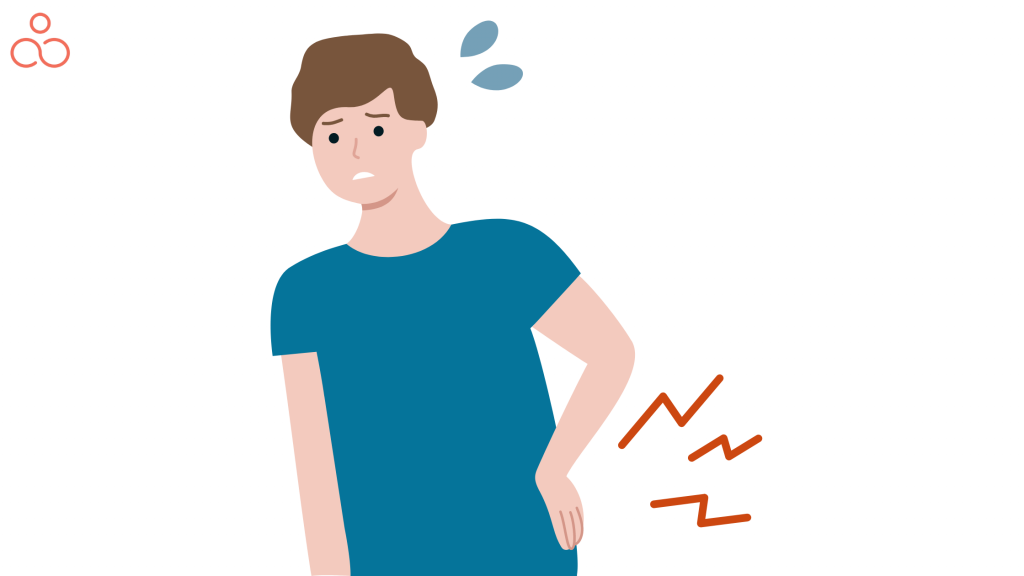
Yoga vs chiropractic care for back pain
Yoga and chiropractic care are both effective treatments for back pain. However, they work in different ways. Yoga focuses on stretching and strengthening muscles and joints to improve posture and reduce tension. Chiropractic care is a type of treatment that focuses on manipulating the spine and other joints to help reduce pain and improve mobility. It is essential to consult with a medical professional before starting any exercise plan to ensure it is appropriate for your situation. Yoga may be more suitable for those with more severe or chronic back pain, as it can help improve posture and flexibility. Chiropractic care may be more suitable for those with more acute back pain requiring manual manipulation for relief. In the end, consulting with a healthcare specialist is advisable to figure out which therapy is appropriate for you.
Yoga vs chiropractic care for neck pain
Yoga and chiropractic care both offer relief for neck pain. Yoga is an excellent form of exercise that can help improve overall health. Chiropractic care is a more specialised treatment that focuses on the alignment and positioning of the spine’s bones. Yoga can help improve muscle strength, flexibility, and posture, while chiropractic care can provide more direct relief from neck pain. Depending on the severity of the neck pain and the individual’s needs, one or both of these treatments may be helpful.
Yoga vs chiropractic care for abdominal pain
Chiropractic care is an excellent option for people who experience abdominal pain. The hands-on approach used by chiropractors can be highly beneficial in helping to alleviate pain. Chiropractors work to identify the source of the pain and can use a variety of techniques to help reduce it. Yoga can also be beneficial in helping to reduce abdominal pain. The relaxation techniques used in Yoga can help reduce stress and anxiety, which can often contribute to abdominal pain. Some Yoga poses are specifically designed to target the abdominal muscles, which can help reduce pain.
Yoga vs chiropractic care for leg pain
Yoga and chiropractic care are two popular treatments for leg pain. Both have pros and cons and can effectively treat leg pain, depending on the individual’s needs. Yoga focuses on strengthening and stretching the muscles and joints, while chiropractic care focuses on realigning the spine and restoring proper joint movement. Both can be beneficial in relieving leg pain, but the specific treatment will depend on the severity and cause of the pain. To determine the best option for a particular individual, it is essential to consult with a doctor or healthcare provider to determine the best course of action.
Yoga vs chiropractic care for body pain
As a general rule, Yoga is a great starting point for relieving body pain. It can help to improve flexibility, strength, and range of motion. It is also a low-impact exercise, which makes it suitable for all ages and fitness levels. On the other hand, chiropractic care can be used to target specific areas of pain, such as the back or neck. It focuses on the alignment of the spine and joints and can relieve chronic pain, help improve posture and increase range of motion. Ultimately, the best course of action for body pain depends on the individual and the type and severity of the pain.
Yoga poses that can assist post chiropractic adjustments
Practising Yoga regularly can assist chiropractic adjustments by reducing the amount of tension and stress in the spine. Here are the 10 Yoga poses that can help you improve your posture, release tension, and strengthen your spine to help with post chiropractic adjustments.
Downward Facing Dog
Downward Facing Dog is an excellent pose for post chiropractic adjustments because it helps to stretch and strengthen the spine. The Pose also helps to open the chest and shoulders, which can help to improve posture and reduce back pain.
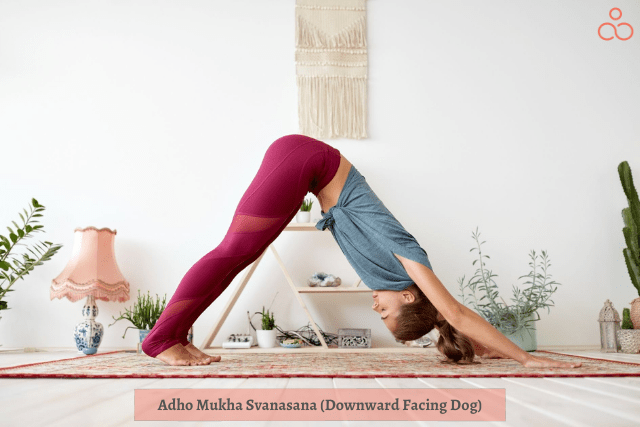
Cat-Cow Pose
Cat-Cow Pose is a great way to stretch and strengthen your back muscles and spine, which can help make post chiropractic adjustments more straightforward and more effective. This Pose helps to create more space between the vertebrae, allowing the spine to move more freely and fluidly.
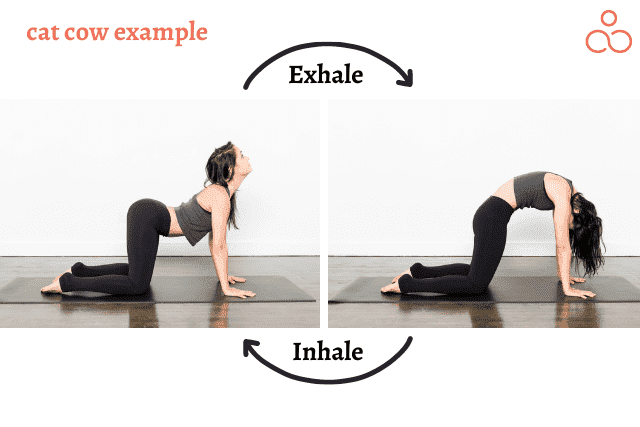
Cobra Pose
The cobra pose helps increase flexibility in the spine and strengthens the core muscles, which can help improve posture and balance. Additionally, the Pose helps to increase the range of motion in the spine, allowing for better alignment of the vertebrae.
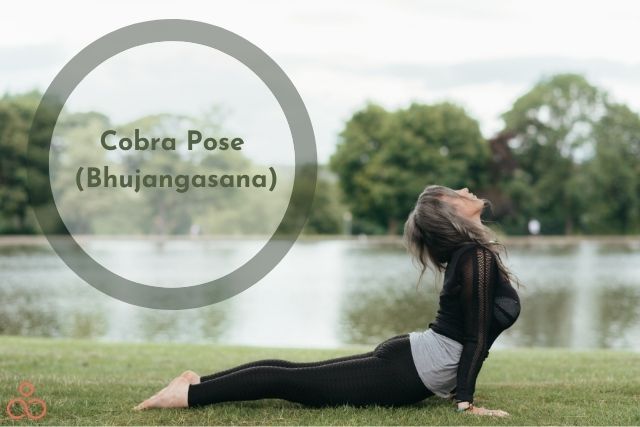
Triangle Pose
The triangle Pose is an excellent pose for post chiropractic adjustments because it helps to open the chest and hips, increasing flexibility and mobility in the spine. Triangle Pose also helps to improve posture by strengthening the core muscles and aligning the spine. This Pose promotes the correct posture of the spine, which can alleviate pain and increase the range of motion.

Bridge Pose
The bridge Pose helps to open the chest, helping to increase lung capacity and improve breathing. It can also help to improve circulation, which can help reduce inflammation and pain. Bridge pose can help with the post chiropractic adjustment process, as it helps the body move more freely, allowing for easier adjustments.
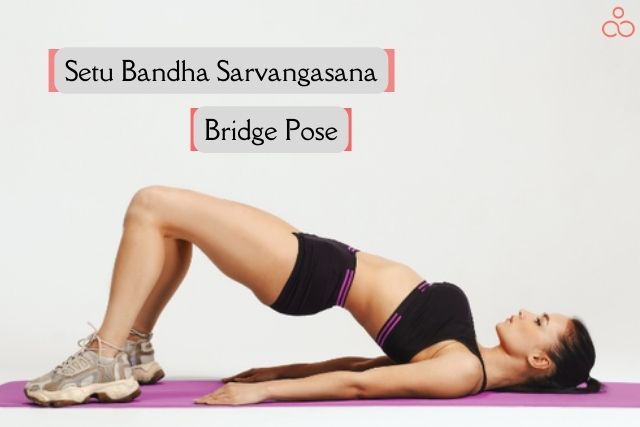
Seated Spinal Twist
Seated spinal twists can be done while seated on the floor, on a chair, or on a Yoga mat. It helps to open up the spine, allowing for more mobility and flexibility. It helps gently stretch and mobilise the spine, relieving tightness and discomfort.
Child’s Pose
The child’s Pose helps improve alignment, posture, and circulation in the lower back and spine. By using the consistent practice of this Pose, chiropractors can help ensure patients’ spines are correctly aligned and their spinal muscles can work together efficiently.

Locust Pose
Locust Pose is a great way to improve the alignment of your spine and ensure a safe post chiropractic adjustment. It helps strengthen the muscles in your back, improving posture and reducing pain. With regular practice and proper form, you can use Locust Pose to reduce discomfort and facilitate chiropractic adjustments.

Supported Bridge Pose
Supported Bridge Pose is an effective way to help with post chiropractic adjustments as it helps you with your spine and to release tension in your back muscles. The Pose helps to stretch the spine, which helps to open up the vertebrae, allowing for easier spinal realignment. The Pose also helps to improve posture, which can help to prevent further misalignments and pain.
Plank Pose
Plank Pose is an effective pose for helping to improve alignment and posture, which is vital for post chiropractic adjustments. This Pose helps to strengthen your core and increase stability, which can help reduce pain and improve posture. Additionally, it can help to improve spinal mobility and reduce nerve compression, allowing for an increased range of motion.
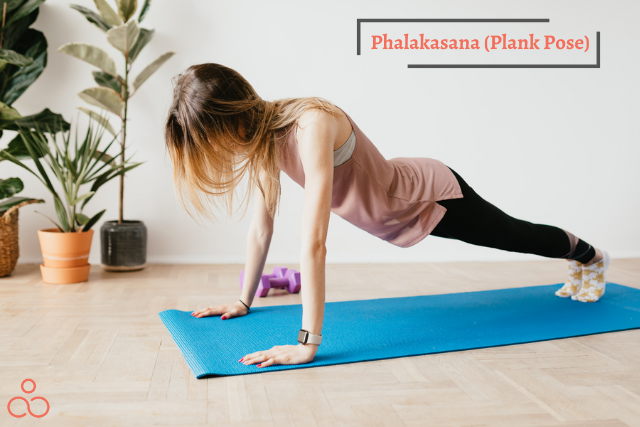
Chiropractic care for Yoga poses
Chiropractic care for Yoga poses is essential to overall health and wellness. 10 types of chiropractic care for Yoga poses can help improve posture, alignment, joint mobility, and overall health. These include:
Manual Adjustments
Manual adjustments are the most common form of chiropractic care. Manual adjusting involves the chiropractor gently manipulating the spine to improve joint mobility and reduce pain.
Spinal Mobilisation
Spinal mobilisation is chiropractic care that uses gentle and slow movements to improve joint mobility and reduce stiffness.
Flexion-Distraction
Flexion-distraction is a form of chiropractic care that involves gently pushing and pulling the spine in specific directions. It’s used to reduce pain and improve joint mobility.
Activator Method
An activator method is a form of chiropractic care that uses an adjustable spring-loaded device to apply gentle force to the spine.
Traction
Traction is a form of chiropractic care that uses a unique table to gently stretch the spine.
Manual Therapy
Manual therapy is a form of chiropractic care that involves the chiropractor manually manipulating soft tissues, such as muscles and ligaments.
Kinesiology Taping
Kinesiology taping is a form of chiropractic care that involves using special elastic tape to help reduce pain and improve joint mobility.
Ultrasound Therapy
Ultrasound therapy is a form of chiropractic care that uses sound waves to reduce pain and improve joint mobility.
Laser Therapy
Chiropractic care utilising low-level laser light to lessen discomfort and increase joint range of motion is known as laser therapy.
Electrical Stimulation
Electrical stimulation is a form of chiropractic care that uses low-level electrical currents to reduce pain and improve joint mobility. Chiropractic care for Yoga poses can help improve posture, alignment, and joints.
Fun facts
Yoga and chiropractic care are two of the most popular forms of alternative medicine, but how much do you know about the extremes of these alternative treatments? Here are 11 of the most extreme facts about Yoga and chiropractic care.
- Hot Yoga is one of the hottest forms of Yoga, with temperatures reaching up to 104°F (40°C).
- The American Chiropractic Association claims that spinal manipulation can help improve mental health and reduce stress.
- The practice of acupuncture is closely related to chiropractic care, and many practitioners use both forms of treatment.
- Sometimes, chiropractors may use electrical stimulation to treat pain.
- Chiropractors can use their hands to manipulate the spine and other joints to help realign the body and reduce pain.
- Chiropractic adjustments have been known to help with everything from headaches to digestive issues.
- Chiropractic care is often used to treat sciatica, neck pain, and back issues.
- Yoga can help improve circulation and reduce inflammation, which benefits overall health.
- Chiropractors can also use therapeutic techniques such as acupuncture, massage, and ultrasound to treat pain and other issues.
- Yoga is one of the oldest forms of physical exercise, with its roots tracing back 5,000 years.
- Both Yoga and chiropractic care can treat chronic conditions such as fibromyalgia, arthritis and multiple sclerosis.
FAQs
What is the difference between chiropractor and Yoga trapeze?
Chiropractors and Yoga trapeze are both forms of alternative medicine that offer physical and mental benefits. Chiropractors use a variety of manual therapies to treat musculoskeletal conditions, while Yoga trapeze involves aerial poses and exercises that help stretch and relax the body. Both treatments can provide relief from pain and stress, but the approach and results vary. Chiropractors use manipulation and other manual therapies to reduce pain and improve mobility, while Yoga trapeze focuses on relaxation and increased flexibility. Both treatments can be beneficial, but depending on the individual’s needs, one may be better suited.’
Can Yoga free up stuck joints like a chiropractor?
Yoga is an excellent way to enhance joint range of motion and flexibility. Relaxing the muscles and alleviating stiffness can significantly improve your range of motion and flexibility. What’s more, Yoga can improve posture and balance – both of which are crucial for joint health and wellness. On top of that, Yoga can help reduce inflammation and pain in the joints and promote overall joint wellness. Even though Yoga should not be viewed as a substitute for chiropractic care, it can be a fantastic companion to keeping joints healthy and mobile.
Does Yoga yield the same benefit as a chiropractor?
Chiropractic care and Yoga both have the potential to provide a range of benefits for specific individuals. Nevertheless, it is imperative to recognize that the advantages of each option vary depending on the individual’s individual objectives and requirements. For example, Yoga may be more effective in improving flexibility, range of motion, and relaxation. At the same time, chiropractic care may be more effective in reducing pain, improving posture, and increasing joint range of motion. Therefore, it is essential to consult a healthcare professional to determine which modality best suits your individual needs.
Is chiropractor better than Yoga after a bodily injury?
After a bodily injury, chiropractic care is often recommended by healthcare professionals due to the range of benefits it can offer. Chiropractors can provide relief from pain and stiffness and can also help to improve mobility, reduce inflammation, and help to restore normal function. In comparison, Yoga can be beneficial for some types of injuries, but the results may not be as pronounced or long-lasting as chiropractic care. Depending on the personal injury and its severity, it may be best to consult a healthcare professional to determine the best course of treatment.
Is chiropractic care ideal for relaxing the body like Yoga?
Chiropractic care is an effective way to relax the body, as it realigns the spine and reduces the tension built up in the muscles. It is not as intense as Yoga but can provide a relaxing experience that helps relieve stress and tension. Additionally, chiropractic care has been known to reduce pain throughout the body, which can help people relax even further.
Conclusion
After comparing the two therapies, it is clear that both Yoga and chiropractic care have their own advantages and disadvantages. While Yoga is a more holistic approach to healing, chiropractic care is better suited to treat specific injuries and provide targeted pain relief. Ultimately, the best approach to health and wellness will depend on an individual’s needs and preferences.

